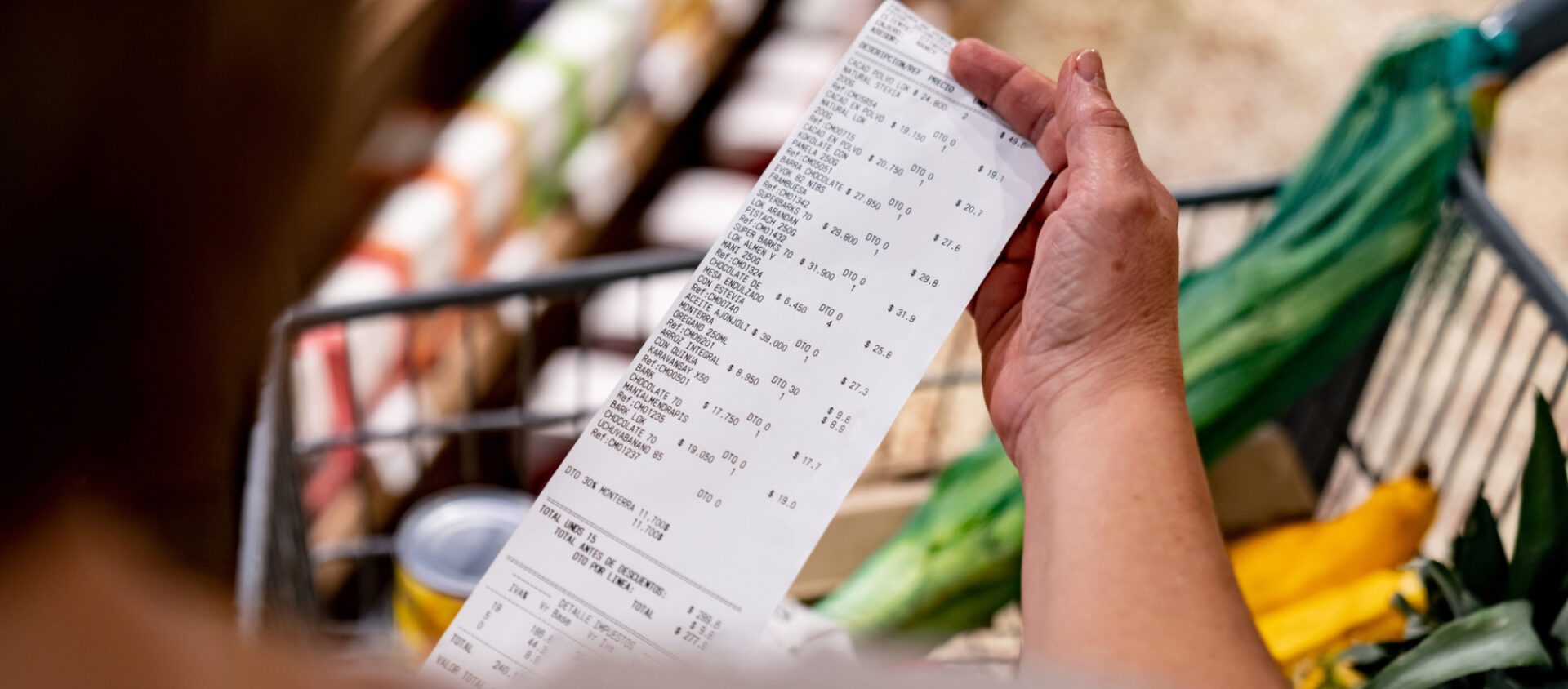As inflation continues to squeeze budgets across the nation, a growing number of households are experiencing food insecurity. The USDA’s recently released report, Household Food Security in the United States in 2023, highlights that food is increasingly inaccessible to some households despite being one of humans’ most basic needs. Inflation-induced high prices aren’t just an inconvenience that requires cutting a few luxuries; for these Americans, high prices mean little – or sometimes no – food on the table.
As we address the spread of hunger in our nation and our world, we must all leverage our power and resources to make hunger a thing of the past – and that starts with understanding the scope of the problem.
In this article, we will discuss:
- What is food insecurity?
- Does inflation impact food insecurity?
- What is the difference between food insecurity and very low food security?
- What does food insecurity look like in the U.S.?
- Which states are most impacted by food insecurity?
- Which demographics are most impacted by food insecurity?
- How can we help address food insecurity?
What is food insecurity?
Food insecurity is a limited ability to acquire adequate food due to a lack of money and other resources. Households experiencing food insecurity don’t have consistent access to enough nutritious food to live a healthy, active lifestyle. This can result in malnutrition and other health issues with lasting consequences.
Food insecurity is caused by a host of factors including the economy, household circumstances, and government policies.
Does inflation impact food insecurity?
Inflation – an increase in prices and a corresponding decrease in the dollar’s purchasing power – is a major driver of food insecurity. The Consumer Price Index for food, which measures the average price of foodstuffs for consumers, increased 0.1 percent from July 2024 to August 2024 and remains 2.1 percent higher than in August 2023. It is expected to rise another 1.6 percent in 2025.
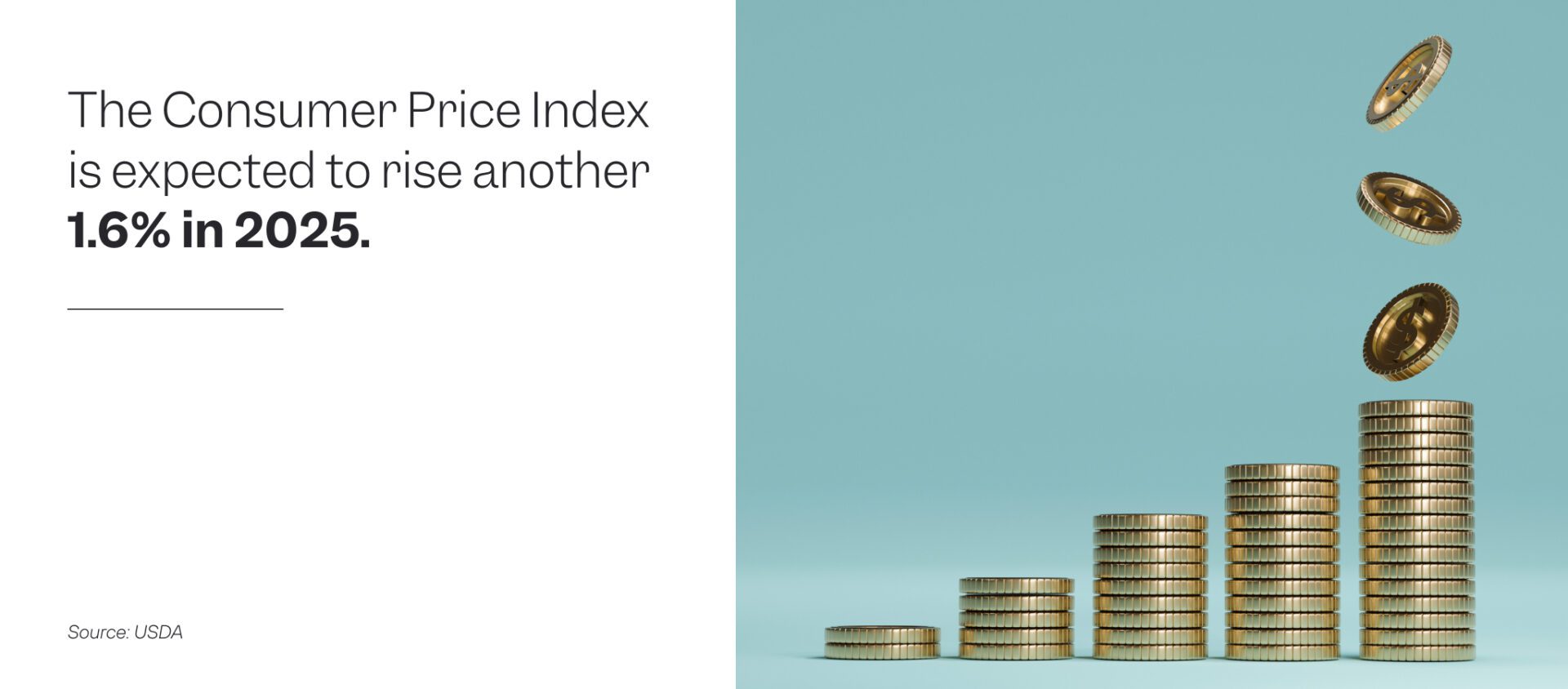
Inflation boosts prices for consumers, making it harder to afford nutritious food. Even the cost of basic products, such as cereals and bakery products, has risen 0.4 percent. Further, inflation drives up almost all expenses, making money tighter than ever. For families already struggling to make ends meet, these increases can push them over the edge into food insecure situations.
What is the difference between food insecurity and very low food security?
While food insecurity limits the quality and variety of a diet, very low food security impacts households’ ability to eat any food regularly – or at all.
Very low food security is defined as a reduction of food intake and disruption of normal eating patterns due to a lack of money or other resources. In 2023, 97 percent of households with very low food security reported not having money to buy food after their groceries ran out, 68 percent reported that they were hungry but didn’t eat because they couldn’t afford to, and 30 percent reported that an adult in the household didn’t eat for an entire day because there wasn’t enough money for food.

Very low food security can have an extremely damaging effect on physical and mental well-being. Children are especially susceptible to lasting developmental problems from not getting enough nutritious food or skipping meals entirely at an early age.
What does food insecurity look like in the U.S.?
Food insecurity continues to plague households across the country, threatening their physical and emotional well-being. Food insecurity in 2023 was statistically higher than in past years, indicating a concerning trend that must be addressed before more households are left to struggle with inadequate amounts of nutritious food.
Last year, 13.5 percent of American households – 18 million families – were food insecure. That means nearly 50 million Americans lived in a household without consistent access to food capable of supporting a healthy lifestyle. Moreover, food insecurity has grown every year since 2020, when there were less than 14 million households struggling with food insecurity.
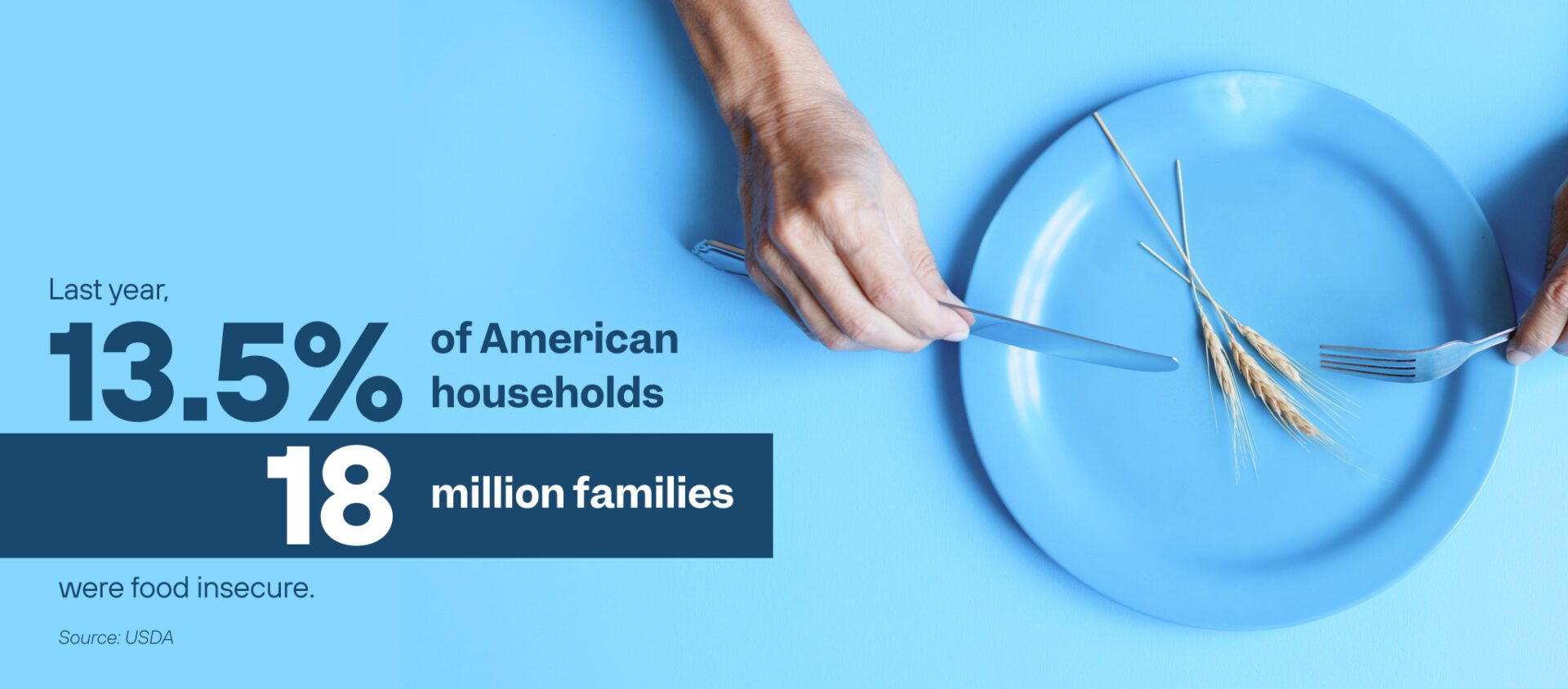
6.8 million of those families – more than 5 percent of all U.S. households – faced very low food security in 2023. These numbers are consistent with the last four years, indicating a lack of progress in helping millions of Americans consistently have food on their tables.
More than six million households with children faced food insecurity in 2023. While many of the adults in households with children bear the brunt of restricted access to food, such as choosing to eat less so that the children can experience mild or no effects, many children still do not have enough food. This can be especially damaging to young bodies that are rapidly growing and still developing.
In 2023, nearly 10 percent of children lived in households where at least one child was food insecure and almost 850,000 children lived in households with very low food security among the children.
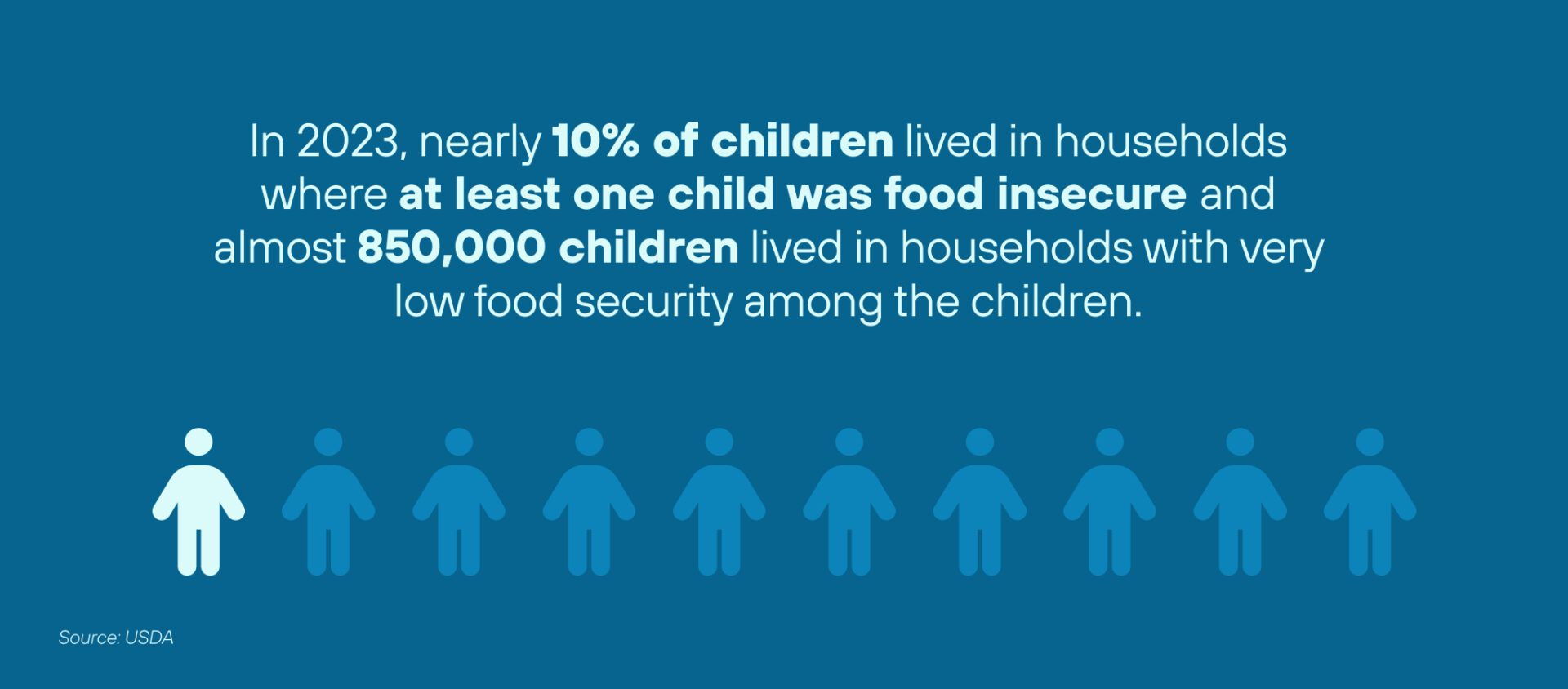
Food insecurity in the U.S. is a rampant problem that impacts millions of households. It creates higher risks for many negative impacts, such as chronic health conditions, reduced performance, and greater mental health challenges.
For instance, adults facing very low food insecurity are more than 10 percent more likely to suffer from hypertension or arthritis. In addition, the average predicted prevalence of cancer in food-insecure households is more than three times the average for highly food-secure households. Similarly, food-insecure adults are six times as likely to suffer a stroke. Food insecurity can also cause psychological stress and contribute to mental health issues. In particular, food insecurity was linked to a roughly 250 percent higher risk of anxiety and depression during the COVID-19 pandemic.
Food insecurity, which affects millions of households, has a far wider impact than simply what is in the pantry or on the table.
Which states are most impacted by food insecurity?
The rate of food insecurity varies by state. A state’s average wages, cost of housing, unemployment, and more all play a role in the prevalence of food insecurity and the number of residents impacted. Similarly, policies such as unemployment insurance and nutrition assistance programs impact the number of households experiencing food insecurity.
As of 2023, the national average for food insecurity is 13.5 percent. However, seven states have significantly higher rates of food insecurity:
- Arkansas: 18.9 percent
- Texas: 16.9 percent
- Louisiana: 16.2 percent
- Mississippi 16.2 percent
- Oklahoma: 15.4 percent
- Kentucky: 14.5 percent
- South Carolina: 14.4 percent

Due to a combination of household- and state-level characteristics, residents of these seven states are more likely to experience restricted access to food.
Factors such as unemployment and geography play a significant role in the prevalence of food insecurity. States with higher unemployment rates often experience greater food insecurity. Unemployment is linked to a 30 percent greater likelihood of food insecurity. Food deserts, defined as areas where it is difficult to buy affordable, nutritious food, also increase the risk of food insecurity. Southern states have a high concentration of food deserts which, coupled with weak safety nets, leave their residents especially vulnerable to food insecurity or very low food security.
Which demographics are most impacted by food insecurity?
Food insecurity can compound existing inequalities by disproportionately affecting already vulnerable populations. Additionally, in an economy still struggling to recover from ongoing inflation, rural and low-income residents are more likely to face food insecurity due to high prices and limited resources.
Children are especially vulnerable to the impacts of food insecurity or very low food security. Among all households with children, 17.9 percent face food insecurity. Moreover, nearly 35 percent of children with a single mom and 23 percent of children with a single dad face food insecurity. The rates are also high for very low food security: 11.8 percent and 8.6 percent, respectively.
Food insecurity has an especially damaging impact on already marginalized communities. The food insecurity rate for Black and Hispanic households is 1.7 times higher than the national average, at nearly 23 percent and 22 percent, respectively; very low food security was around 9 percent and 8 percent, respectively. Additionally, people experiencing poverty or living in rural areas have higher rates of food insecurity and very low food security.
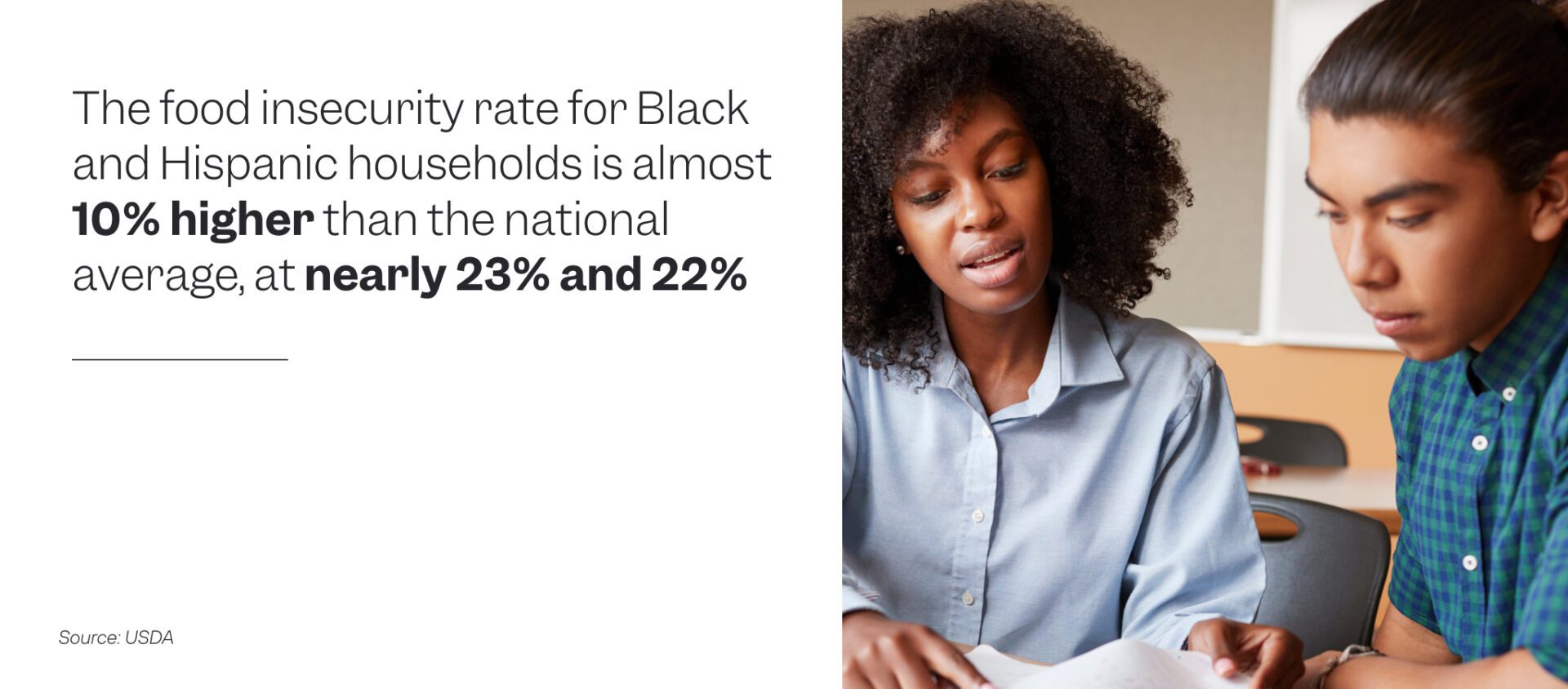
Inadequate access to food is affecting households throughout our nation. While some demographics have especially high food insecurity rates, the truth is that few groups are completely exempt from the threat of food insecurity in our current economy.
How can we help address food insecurity?
Food insecurity is a wide-ranging issue that touches millions of lives. Yet every year, there is enough food produced to feed everyone in the world. Ending hunger is about making sure that food goes to the people who need it most. Hunger is a huge problem, yet even a single individual can make a difference.
Simple but impactful steps that you can take today include:
- Writing a letter to your local representative about issues currently moving in Congress.
- Speaking up on social media and tagging your senator or local representative.
- Organizing community letter-writing efforts to Congress within your church or community.
- Praying for the end of hunger.
- Giving to organizations that are dedicated to ending hunger.
The Farm Bill
Federal nutrition programs are essential to addressing hunger. These programs give about 10 times as much food assistance as private churches and charities combined. Legislation such as the farm bill has a significant impact on any American who purchases and consumes food.
The farm bill is an expansive set of policies that includes programs such as the Supplemental Nutrition Assistance Program (SNAP), which alone serves more than 41 million people and is shown to be an incredibly effective method of reducing food insecurity and stopping hunger. Other programs addressing domestic food insecurity that have been a part of the farm bill include:
- The Emergency Food Assistance Program;
- Food Distribution Program on Indian Reservations;
- Commodity Supplemental Food Program;
- Fresh Fruit and Vegetable Program;
- Seniors Farmers’ Market Nutrition Program;
- Healthy Food Financing Initiative;
- Community Food Projects; and
- The Gus Schumacher Nutrition Incentive Program.
The farm bill must be reauthorized by Congress every five years. While this gives Congress a chance to improve its food and nutrition security efforts, it also creates the potential for gridlock and devastating cuts to programs that address food insecurity. Failing to reauthorize the farm bill or pass an extension (which occurred in 2023) would shut down some programs while reverting key pieces of legislation that farmers rely on back to outdated laws from nearly seven decades ago. America needs politicians who will prioritize passing a farm bill with strong nutrition assistance programs.
Passing the farm bill is vital to putting food on the table in millions of homes – and you can help. Experience has shown us that congressional leaders really do listen to their constituents, so adding your voice to those in favor of reauthorizing the farm bill can help move it up the priority list for your members of Congress. Simple efforts such as writing letters or speaking up on social media can help to turn the tide and ensure the farm bill is passed.
